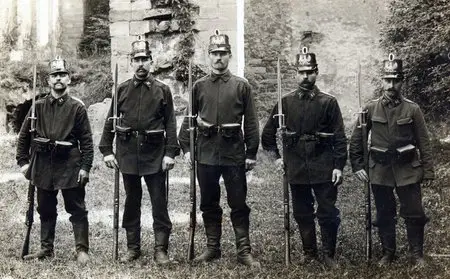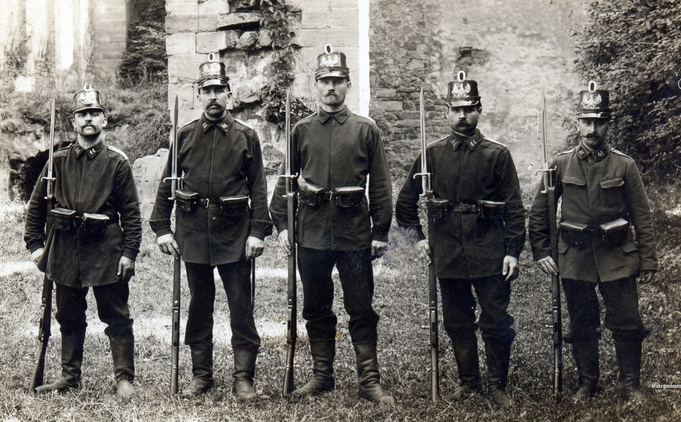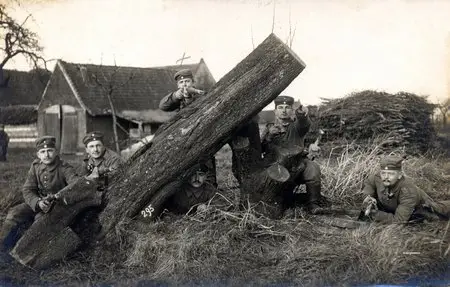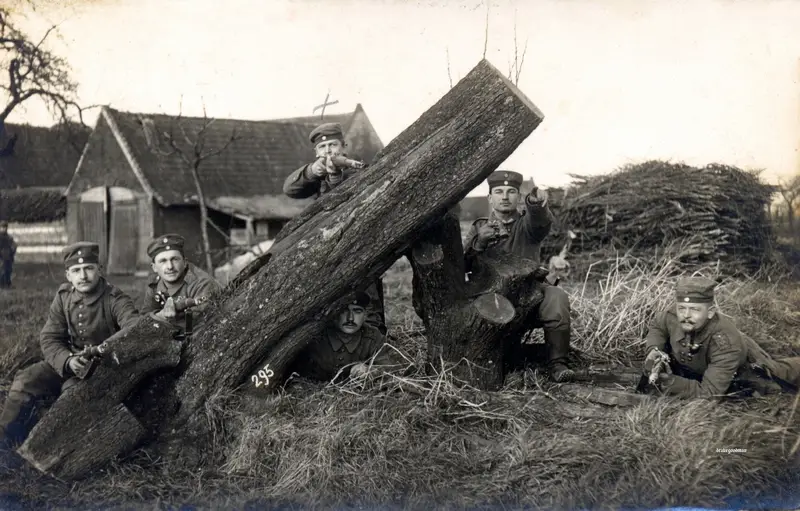World War I Photography (part 3)
100 jpg | up to 3345*2070 | 517.31 Mb
100 jpg | up to 3345*2070 | 517.31 Mb
World War I (WWI), which was predominantly called the World War or the Great War from its occurrence until 1939, and the First World War or World War I thereafter, was a major war centred in Europe that began on 28 July 1914 and lasted until 11 November 1918. It involved all the world's great powers, which were assembled in two opposing alliances: the Allies (centred around the Triple Entente) and the Central Powers (originally centred around the Triple Alliance). More than 70 million military personnel, including 60 million Europeans, were mobilised in one of the largest wars in history. More than 9 million combatants were killed, largely because of great technological advances in firepower without corresponding advances in mobility. It was the sixth deadliest conflict in world history.
The assassination on 28 June 1914 of Archduke Franz Ferdinand of Austria, the heir to the throne of Austria-Hungary, was the proximate trigger of the war. Long-term causes, such as imperialistic foreign policies of the great powers of Europe, including the German Empire, the Austro-Hungarian Empire, the Ottoman Empire, the Russian Empire, the British Empire, France, and Italy, played a major role. Ferdinand's assassination by a Yugoslav nationalist resulted in a Habsburg ultimatum against the Kingdom of Serbia. Several alliances formed over the past decades were invoked, so within weeks the major powers were at war; via their colonies, the conflict soon spread around the world.
On 28 July, the conflict opened with the Austro-Hungarian invasion of Serbia, followed by the German invasion of Belgium, Luxembourg and France; and a Russian attack against Germany. After the German march on Paris was brought to a halt, the Western Front settled into a static battle of attrition with a trench line that changed little until 1917. In the East, the Russian army successfully fought against the Austro-Hungarian forces but was forced back by the German army. Additional fronts opened after the Ottoman Empire joined the war in 1914, Italy and Bulgaria in 1915 and Romania in 1916. The Russian Empire collapsed in 1917, and Russia left the war after the October Revolution later that year. After a 1918 German offensive along the western front, United States forces entered the trenches and the Allies drove back the German armies in a series of successful offensives. Germany agreed to a cease-fire on 11 November 1918, later known as Armistice Day.
By the war's end, four major imperial powers—the German, Russian, Austro-Hungarian and Ottoman Empires—had been militarily and politically defeated and ceased to exist. The successor states of the former two lost a great amount of territory, while the latter two were dismantled entirely. The map of central Europe was redrawn into several smaller states. The League of Nations was formed in the hope of preventing another such conflict. The European nationalism spawned by the war and the breakup of empires, the repercussions of Germany's defeat and problems with the Treaty of Versailles are generally agreed to be factors in the beginning of World War II.
World War I Photography (part 1)
World War I Photography (part 2)
Find more early 20th century photographs on AvaxHome!
Please visit my blog on AvaxHome!
World War I Photography (part 2)
Find more early 20th century photographs on AvaxHome!
Please visit my blog on AvaxHome!





